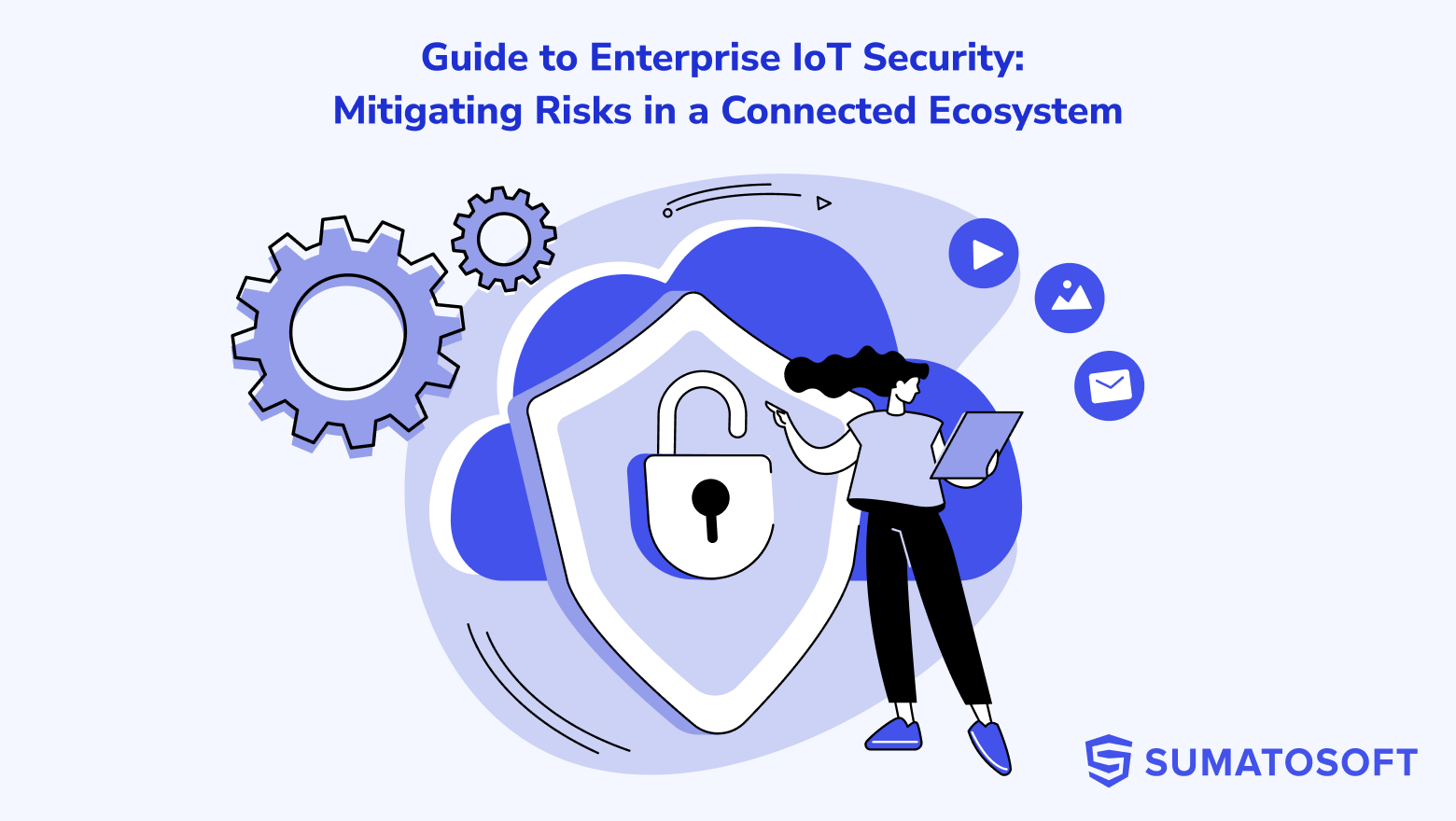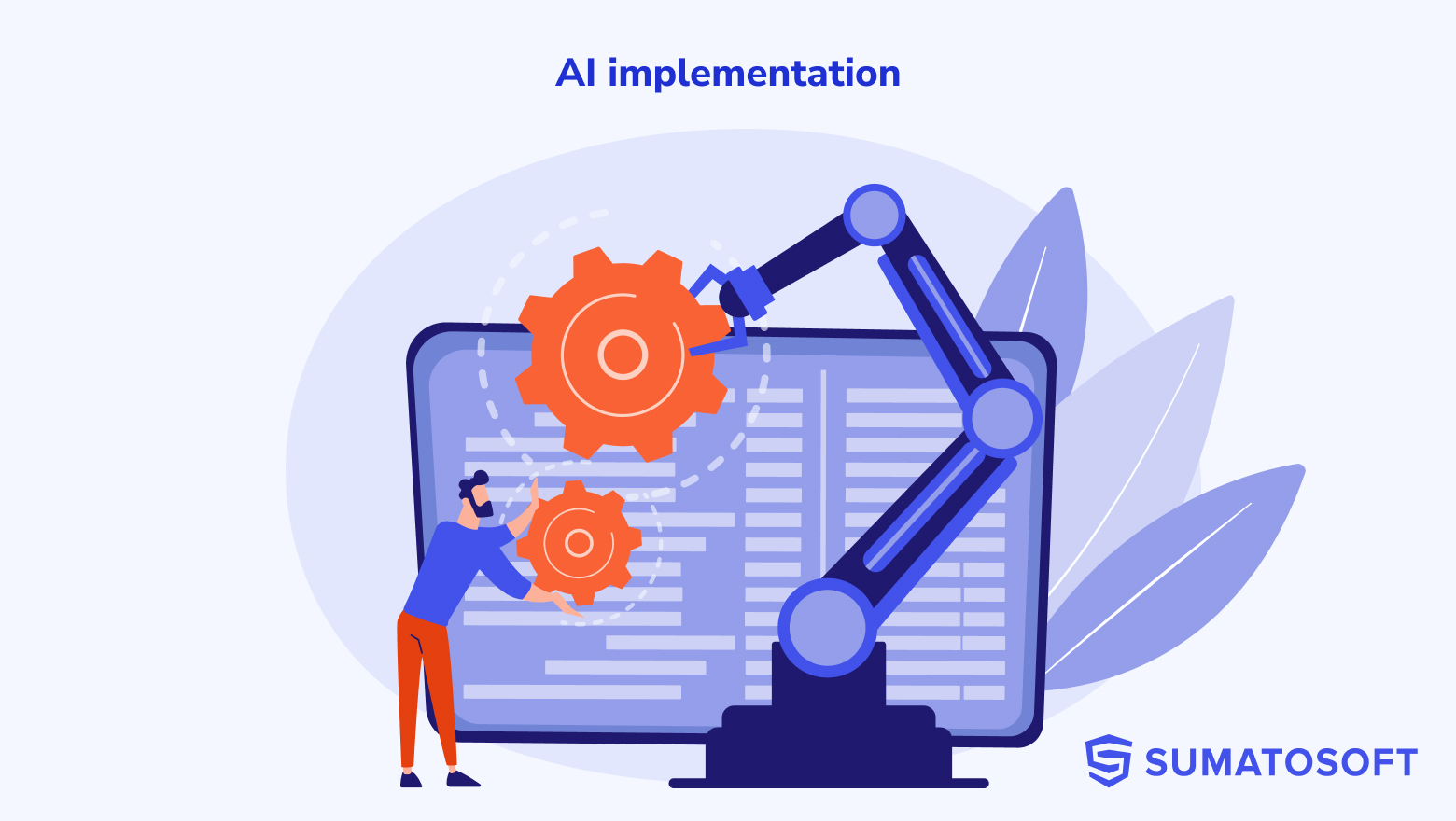IoT Data Visualization – Best Practices & Examples
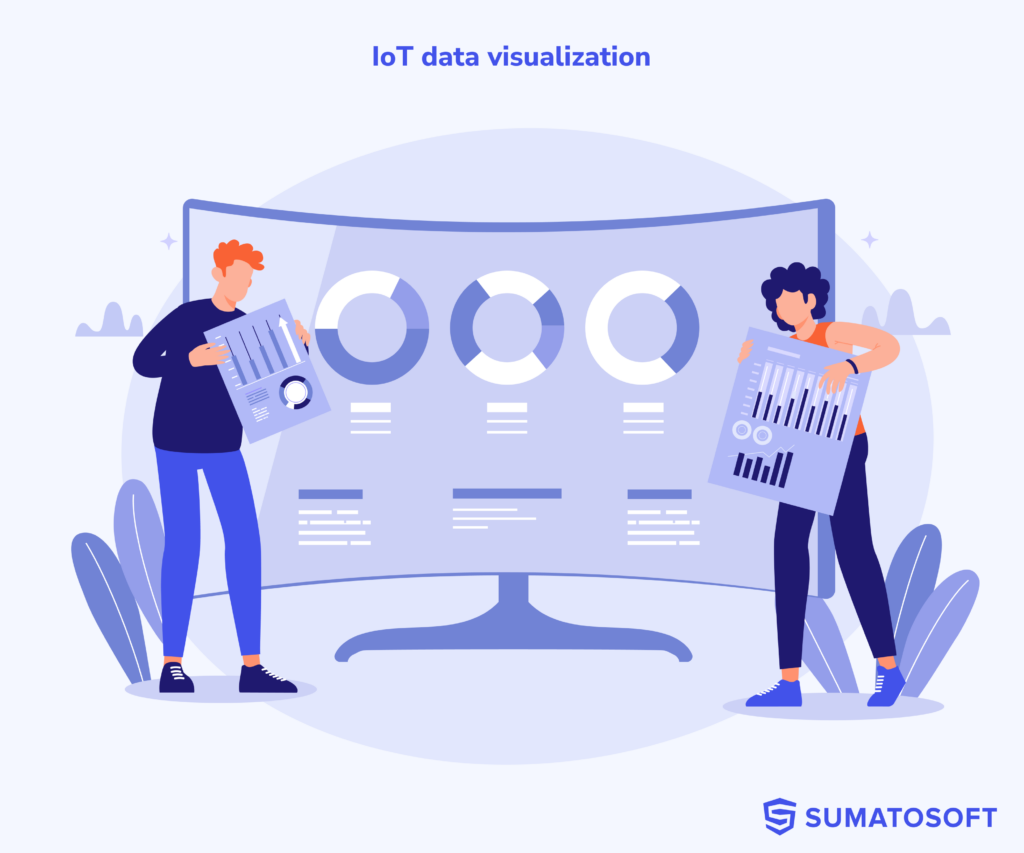
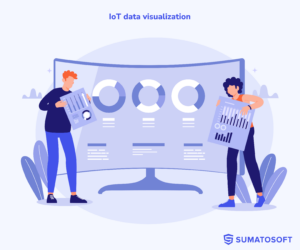
It’s great to be a data-driving business.
It’s commendable if you implement IoT technology in your enterprise.
It’s challenging to turn raw terabytes of information into meaningful insights.
Tracking and monitoring any aspect of business and every part of our daily lives have become easier than ever. Being on an island beach, top managers can observe the manufacturing process of Volkswagen Tiguan production in Germany in real-time! By utilizing modern technologies, humanity can estimate the real state of nature like water and air pollution around the globe and take actions to improve the situation. That all has become possible thanks to the data and the Internet global network.
However, companies bumped into a challenge:
The volume of data all the technologies produce is enormous and can’t be analyzed by people manually.
According to Amazon Web Services, data grows 10x every 5 years driven by network-connected smart devices. So the Internet of Things (IoT) makes enormous contributions to data growth, without taking into account the standard growth of information on the Internet. For example, international companies like Google, Facebook, Microsoft, and Amazon store at least 1.200 petabytes of information (which is equal to 1.200.000 terabytes).
So we have to answer a question: “What should we do with all that information? Just store it and pay for the storage capacity?”
The answer is simple: “We should analyze it!”
And one of the greatest tools for that is data visualization. In the article, we find out what this term means, examine the reason why it became very popular in the 21st century, how to implement it in an IoT system through an IoT dashboard, and consider great examples of IoT data visualization implementation.
Enjoy reading!
What Is Data Visualization
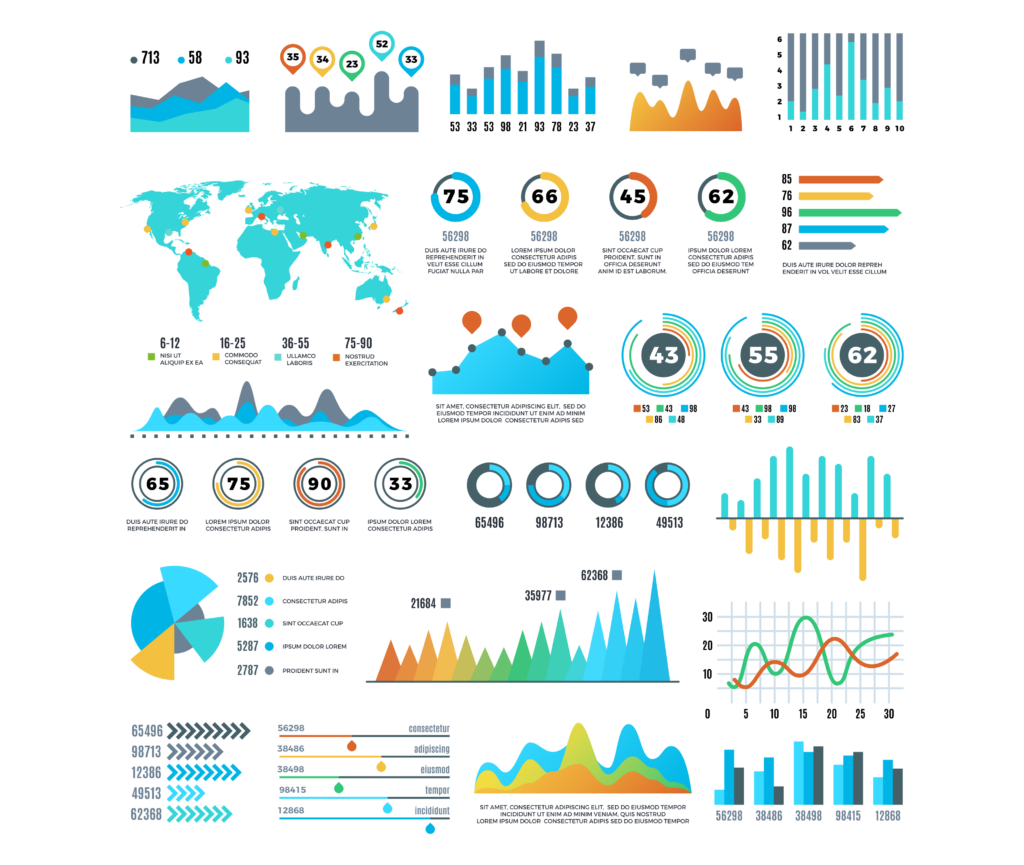
To visualize the data means to make charts out of numbers. The goal of data visualization is to provide a graphical representation of the data so analysts can identify patterns and trends. Data visualization shows great efficiency when it comes to large series of data. Its methods include graphs, bar charts, pie charts, status tables, maps, line graphs, scatter plots, and much more. These charts contain a lot of condensed information that allows analysts to see the data trends easily and make the right conclusions. Such conclusions can be priceless and bring new opportunities to businesses.
However, data visualization is a tool that is expected to be applied correctly. There are several questions you should ask yourself before building and implementing anything:
- What issue do you want to solve?
- What goal do you want to achieve?
- How do you see satisfying results after you use data visualization?
- What charts do you consider the most valuable in achieving your goal?
- Do you need real-time data updates?
These common questions are not invented by our company, but we actively use them when working with clients. And we have to admit that the number of companies that look for IoT data visualization instruments for their businesses has grown. The reason is the increased flow of the data.
The Evolution to a Data-Driven World: A Historical Overview
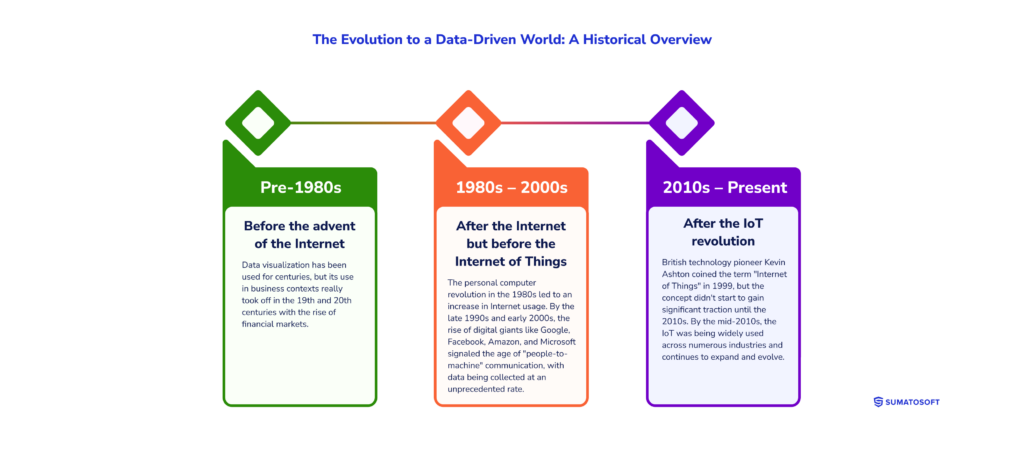
Understanding the emergence and significance of the “data-driven world” requires us to chart its course through three critical time periods:
- Before the advent of the internet
- After the Internet but before the Internet of Things (IoT)
- After the IoT revolution
Era Preceding the Internet
Data visualization, though not as advanced as today, has been an integral part of business operations for a significant amount of time. For instance, businesses have long utilized simple pie charts to analyze monthly expenses and discern the proportionate expenditure of different categories.
Looking back to the 19th century, financial markets, such as the famed New York Stock Exchange, exemplified early use cases of data visualization. Traders would use line charts and histograms to track financial metrics like exchange rates, total sales, and stock prices. Communication during this era was predominantly human-to-human, with data serving to facilitate informed decision-making.
The Era Following Internet Adoption but Preceding IoT
The 1980s ushered in a new era with the proliferation of personal computers and the subsequent rise in internet usage. This period marked the birth of digital behemoths such as Google, Facebook, Amazon, and Microsoft, entities that handle vast troves of user data. Every user interaction on the internet – every click, every button press, every item browsed – translates into a data point, collectively forming rich databases. Companies leveraged these data insights to comprehend customer behaviors and preferences, revolutionizing marketing strategies. This era was characterized by “people-to-machine” communication, with data visualization becoming an indispensable tool for market specialists.
The Era Post IoT Revolution
With the arrival of IoT in the 21st century, we embarked on a truly data-driven era. By the mid-2010s, the IoT had begun to significantly influence numerous industries, including manufacturing, agriculture, healthcare, and home automation, among others. IoT networks introduced machine-to-machine communication, resulting in the generation of data on an unprecedented scale, surpassing traditional data storage and processing capacities. To manage such colossal data sets, IoT incorporates advanced technologies like Big Data methods, NoSQL solutions, cloud computing, and fog analytics. You can learn more about IoT architecture and fog computing in the whitepaper. In this context, IoT data visualization becomes invaluable, offering the sole feasible method for humans to interpret and analyze IoT data effectively.
The IoT data is both valuable and worthless because of its volume. The trick here is to turn these massive data streams from a liability into a strength.
One of the greatest challenges for the IoT industry is the interpretation of its massive flows of data. One of the most effective ways is to use IoT data visualization and build an IoT dashboard.
IoT Dashboard As a Tool For IoT Data Visualization
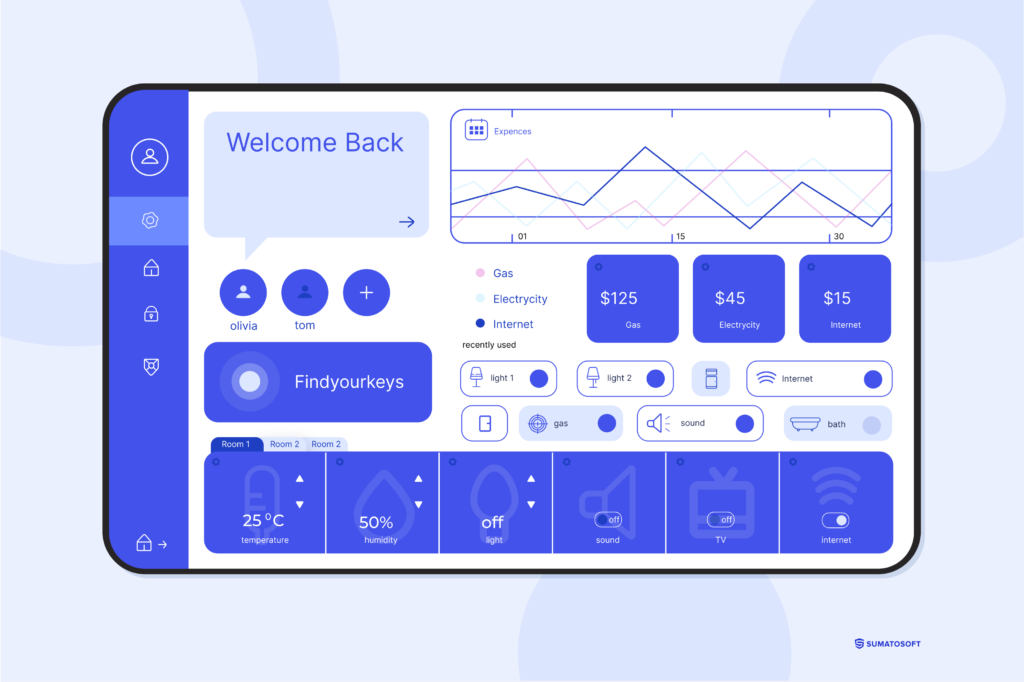
Source: ctfassets
The Internet of Things dashboard (shortly, IoT dashboard) is a web page or web application that contains a visual display of IoT data on one screen. It provides at-a-glance views of key metrics that are essential to the whole system. In other words, an IoT dashboard displays meaningful visuals in a human-readable format that can be easily interpreted by a dashboard user.
Developers like to use IoT dashboards for two reasons:
- Visuals have a responsive design which means you can view a dashboard from smartphones, laptops, or tablets.
- The visual data is constantly updated in real-time. Where “in real-time” means low latency which is extremely valuable for IoT applications.
We want to highlight the fact that the IoT dashboard and IoT platform are two different entities. A dashboard is a part of the sixth component of the IoT ecosystem that is called “an application component”, and it is a visual display of the metrics only. An IoT platform, in turn, covers all components of the ecosystem which means it collects the data from sensors, transfers them to the cloud or a gateway, stores, analyzes, preprocesses, encrypts, and, finally, displays.
Hence, an IoT dashboard is a part of an IoT platform in general and a part of an application component in particular.
You can see a simplified structure of an IoT ecosystem below.
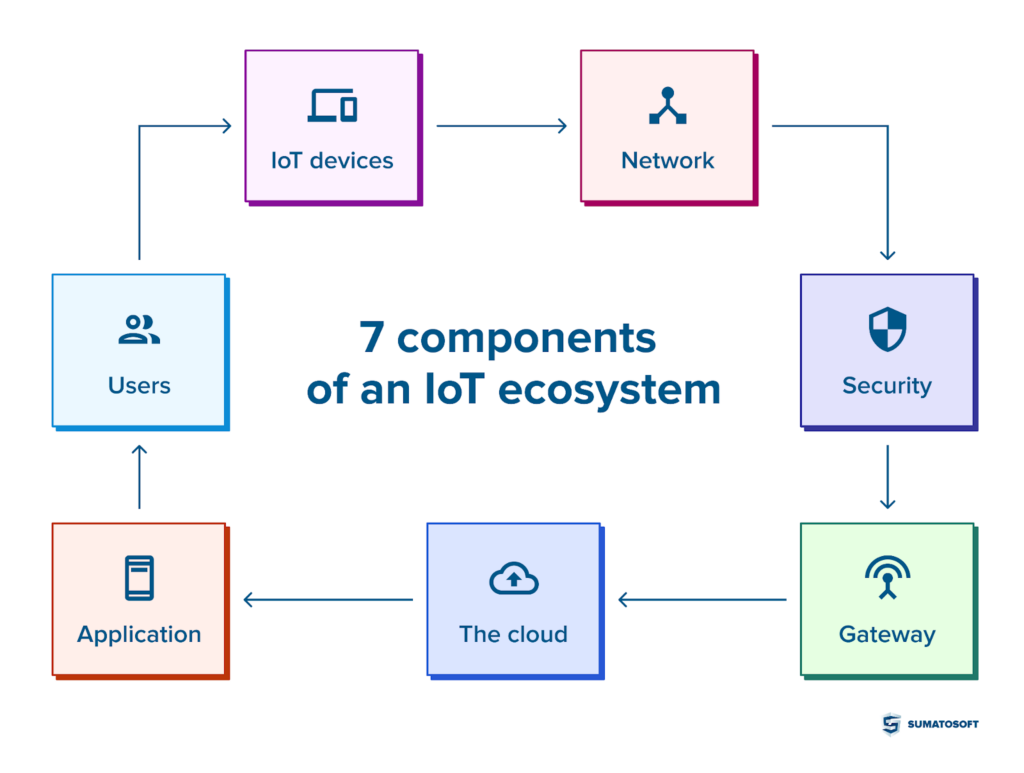
Talking about a visual representation of the data, a logical question appears: what data to display? However, the answer depends on business goals and needs. It’s impossible to build a universal dashboard that fits every particular case – that is why good dashboards are mostly highly customizable.
So, let’s talk about what a good dashboard looks like.
IoT Data Visualization: Best Practices
#1 Customize Dashboard to Your Need
A dashboard is a set of widgets that display some information that you consider to be meaningful for your business. So make sure that the widgets solve business challenges instead of just displaying condensed information from IoT sensors. Key items for customization are:
- Key performance indicators (KPIs). For example, if the dashboard is being used to monitor the performance of manufacturing equipment, the KPIs might include uptime, throughput, and yield.
- Alerting. For example, if the dashboard is being used to monitor equipment failures, the alert thresholds should be set based on the acceptable downtime for that equipment.
- Data visualization. This includes choosing the right chart types, colors, and labels.For example, you could customize the dashboard to display the temperature and humidity levels in different sections of the greenhouse using a color-coded map. This would allow you to quickly identify any areas of the greenhouse that are experiencing abnormal temperature or humidity levels and take action to correct them.
- Access control. This includes setting up user roles, permissions, and authentication mechanisms.
#2 Enable Real-Time Parameter Adjustment
In addition to updating visual data on an IoT dashboard in real-time, it’s also important to enable real-time adjustment of certain parameters from the dashboard. While this control option may not be a built-in function of the dashboard itself, you likely have an IoT management system that powers the visual display. By providing interactive visualization and control, analysts can not only observe but also make quick decisions and implement them in real-time, which can be invaluable for optimizing operations and achieving business goals.
#3 Utilize Filtering, Sorting and Exporting Options
When dealing with a large amount of data in an IoT dashboard, it is important to have filtering and sorting options available. These functions allow users to easily identify patterns and outliers, making it easier to draw conclusions from the data. For example, sorting data by date or location can reveal trends over time or in specific areas.
In addition to standard filtering and sorting options, consider implementing advanced filtering options, such as range or category filters. These can help to refine data even further and provide more targeted insights.
It is also important to ensure that exporting data is a seamless process. Users should be able to easily export data from the dashboard to other tools for further analysis or reporting.
By including robust filtering, sorting, and exporting options, IoT dashboards become more powerful tools for analysis and decision-making.
#4 Highlight Key Data
While it’s important for all visuals on an IoT dashboard to be meaningful, there are certain data points that are more critical than others. To ensure that important information is not overlooked, consider using visual cues such as colors, alerts, or notifications to highlight key data. This can be especially helpful in situations where quick decisions need to be made based on real-time data. To determine when and how to highlight key data, establish rules with clearly defined conditions. For example, you may want to highlight data that falls outside of a certain range or exceeds a certain threshold. By emphasizing the most important data, you can make it easier for users to quickly identify and act on critical information.
#5 Try Different WIedgets and Tools
Modern dashboards offer a range of widgets and tools such as scatterplots, maps, bar charts, pie charts, and tables. Experimenting with different widgets can help you find the best ones that suit your business needs and present data in a more effective and actionable way. So don’t hesitate to try out new widgets and tools and see which ones work best for you.
#6 Build Dashboard From The Question Perspective
When building an IoT dashboard, it’s important to start with a clear understanding of the questions that need to be answered. This means identifying the specific business goals and objectives, as well as the key performance indicators (KPIs) that will be used to measure progress towards those goals. From there, the dashboard can be designed with a focus on delivering insights and actionable information that will help users make informed decisions and take strategic action. By starting with a question-oriented approach, the dashboard will be more effective in driving business outcomes and achieving success.
#7 Prioritize Simplicity in Visuals
Effective IoT data visualization should provide an at-a-glance overview of important information, without overwhelming users with too many details. To achieve this, use white space to separate different sections and avoid cluttering the dashboard with too many colors or visual elements. It’s also crucial to set up notification rules in a way that highlights the most important alerts and prevents them from being buried among less critical messages.
#8 Use Clear and Digestible Labels
One of the important aspects of a good dashboard is to have clear and digestible labels for all the visual elements it contains. Users should be able to quickly understand what a graph or chart represents, and what data it is visualizing. This can be achieved by using concise and descriptive labels, as well as annotations and tooltips to provide additional context and information.
It’s also important to use consistent labeling across different widgets and charts, so that users can easily compare and understand the data. Avoid using complex jargon or technical terms, and instead opt for simple and straightforward language that is accessible to all users.
Furthermore, it’s helpful to prioritize the most important information and data on the dashboard, and ensure that the labels and visual elements related to it are easily noticeable and stand out. This can be achieved through the use of appropriate colors, font sizes, and other visual cues that draw the user’s attention to the relevant information.
Why To Use IoT Data Visualization
The main reason why you should use IoT data visualization is that there are literally no other options for a human being to analyze such an enormous volume of data that comes from an IoT system. Besides that, IoT data visualization is an important part of the whole IoT system with its benefits like predictive maintenance, reducing operational costs, higher productivity, and much more. Instead of describing its benefits, we provide 5 examples of how this technology is used in different industries.
Examples of Data Visualization In IoT
World’s Air Pollution. Real-time Air Quality Index
Let’s go back to the pollution topic. Nowadays, more and more people turn their heads toward this issue and start green initiatives aimed at raising awareness of this issue and improving the situation by implementing green technologies. One of such initiatives is a world’s air pollution dashboard that has been monitoring air quality all over the globe since 2014 with thousands of installed quality monitoring stations and IoT data visualization. You can look at an interactive map and see areas where the air is good, unhealthy, or even hazardous.
Agriculture Living Laboratory: WHIN innovation network
Wabash Heartland Innovation Network deployed hundreds of weather stations across the Indiana region in the USA to share information about the weather conditions and farmers’ assets. By using IoT data visualization, the company aims to make the densest agricultural weather network in the country. It has already covered a 10-country region, providing an expansive network of internet-connected sensors that aggregates and disseminates the data it obtains to all participants. By sharing information, farmers become more efficient, save time, and increase yields.
Arla Foods: Transparent Delivery From a Farm to a Fridge

Arla Food is a multinational cooperative based in Denmark and the largest producer of dairy products in Scandinavia. Arla is committed to high standards of animal welfare, product quality, and safety. The company also looks for opportunities to use modern technologies to make its products and services even better. One of the areas is tracking and improving the journey that milk products take from сows to customers with the help of IoT data visualization. The company used the Power BI visualization tool along with other technologies like SQL and Azure to bring an idea of transparent delivery to life.
Grundfos: Quick and Informed Manufacturer
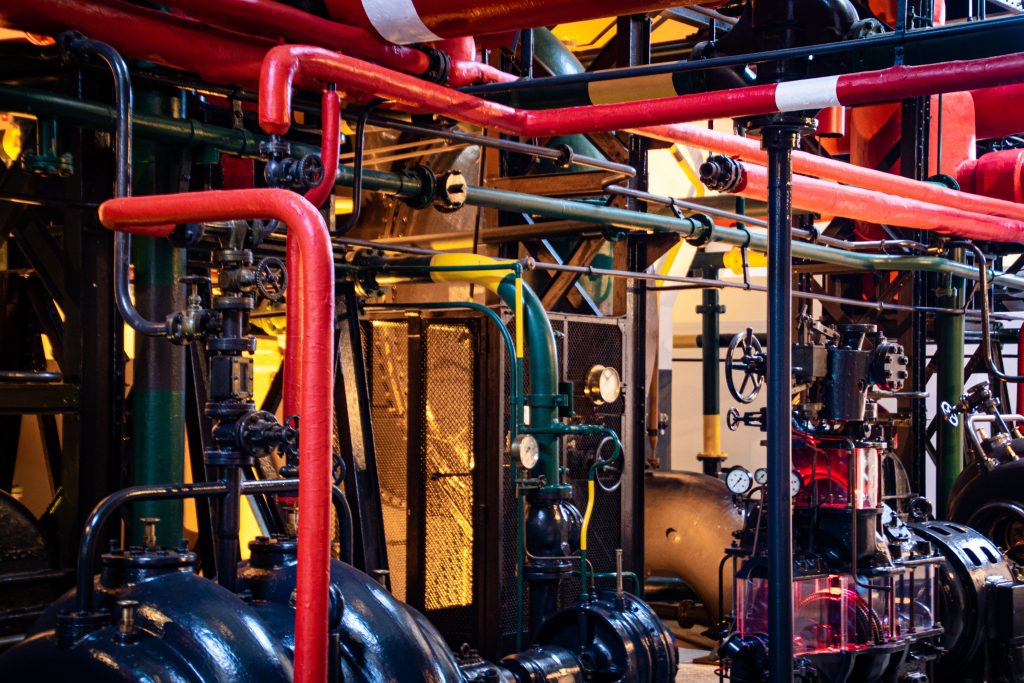
Grundfos is a Danish company with more than 19,000 employees globally and it is the largest pump manufacturer in the world. During the company’s growth, the Business Intelligence department became a bottleneck since all reports and dashboards for all data from the factory, Internet of Things devices, and ERP system go through this department. As a result, report development speed diminished.
The company referred to a cloud-based reporting and IoT data visualization tool to correct the situation. This decision sped up the reporting process as well as provided additional opportunities for visualization both for small analytic groups of users and on a bigger scale in the form of a dashboard that displays on a large screen on a production floor.
Dashboards and Data Visualization in a Highly Technology Company

Siemens is a technology company focused on industry, infrastructure, transport, and healthcare. The company provides the next generation of data-powered customer service for the rolling stock industry in the U.K. and beyond. IoT Data visualization can bring great benefits to such a technology company as well. Siemens strives to empower its customers with resource-effective factories, resilient supply chains, smart electricity grids, clean transportation, and much more. By using the Grafana tool the company managed to observe the data from the trains in real-time and optimize their maintenance sequencing. Another case is building a temperature monitoring and control dashboard that helps to increase the lifespan of trains and decrease their downtimes.
IoT Data Visualization Dashboard from SumatoSoft
SumatoSoft helps companies to digitalize their businesses and develops meaningful visualization for clients’ businesses. For example, we build a platform for monitoring the work of industrial (commercial) refrigerators online with instant alerts on urgent issues and management of historical data. You can look at the whole case study in the link.
We are recognized as top software developers by leading analyst agencies like Techreviewer, Clutch, and Goodfirms. We also became a member of The Council for Inclusive Capitalism to make the world a better place.
We believe that a vast background of knowledge, professionalism, and expertise will be helpful to your business too.
Get in touch with us for a free consultation. Let’s build a new product together.
Afterward
As for keeping up with the advent of technology, the world looks for new opportunities to analyze the data that is generated in enormous volumes by computers and new technologies. We entered the data-driven area, and with the arrival of the Internet of Things systems and machine-to-machine communication traditional methods became unfit even for data storing and processing. The IoT industry faced a new challenge: processing and analyzing massive flows of data.
New technical solutions like NoSQL databases solved the issue of data processing, while IoT data visualization is expected to address the issue of data analysis. Analysts started to use the Internet of Things dashboards to aggregate the most valuable information in one place. Dashboards became especially popular in the IoT industry thanks to their responsive design and real-time data updates.
The IoT visualization was implemented to build various solutions for agriculture, supply chain, manufacturing, technology sector, and to develop a solution for tracking world air quality. That’s all sounds impressive, and we expect the implementation of IoT technology along with data visualization will rise.
Thanks for reading!
Let’s start
If you have any questions, email us info@sumatosoft.com

